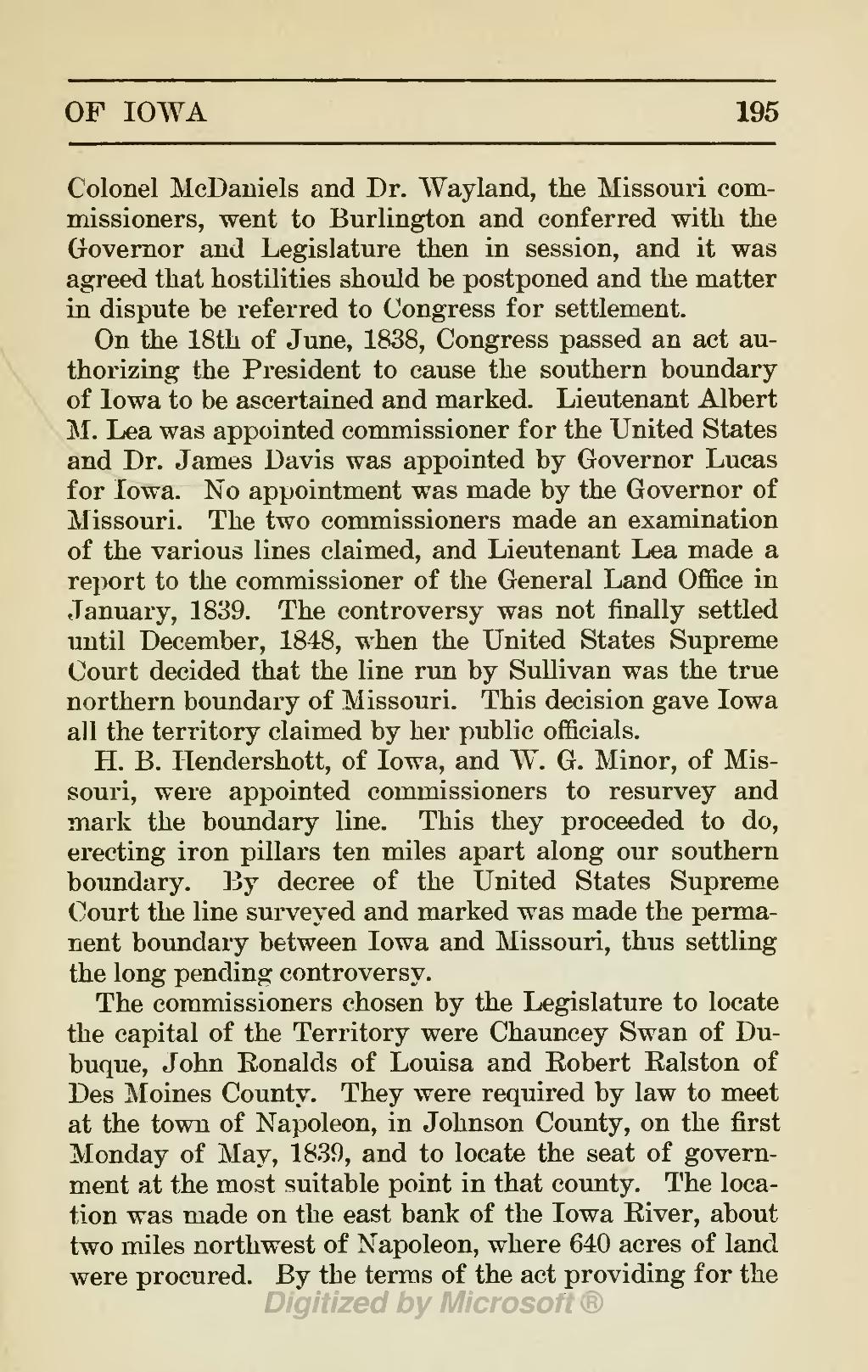| OF IOWA | 195 |
Colonel McDaniels and Dr. Wayland, the Missouri commissioners, went to Burlington and conferred with the Governor and Legislature then in session, and it was agreed that hostilities should be postponed and the matter in dispute be referred to Congress for settlement.
On the 18th of June, 1838, Congress passed an act authorizing the President to cause the southern boundary of Iowa to be ascertained and marked. Lieutenant Albert M. Lea was appointed commissioner for the United States and Dr. James Davis was appointed by Governor Lucas for Iowa. No appointment was made by the Governor of Missouri. The two commissioners made an examination of the various lines claimed, and Lieutenant Lea made a report to the commissioner of the General Land Office in January, 1839. The controversy was not finally settled until December, 1848, when the United States Supreme Court decided that the line run by Sullivan was the true northern boundary of Missouri. This decision gave Iowa all the territory claimed by her public officials.
H. B. Hendershott, of Iowa, and W. G. Minor, of Missouri, were appointed commissioners to resurvey and mark the boundary line. This they proceeded to do, erecting iron pillars ten miles apart along our southern boundary. By decree of the United States Supreme Court the line surveyed and marked was made the permanent boundary between Iowa and Missouri, thus settling the long pending controversy.
The commissioners chosen by the Legislature to locate the capital of the Territory were Chauncey Swan of Dubuque, John Ronalds of Louisa and Robert Ralston of Des Moines County. They were required by law to meet at the town of Napoleon, in Johnson County, on the first Monday of May, 1839, and to locate the seat of government at the most suitable point in that county. The location was made on the east bank of the Iowa River, about two miles northwest of Napoleon, where 640 acres of land were procured. By the terms of the act providing for the
